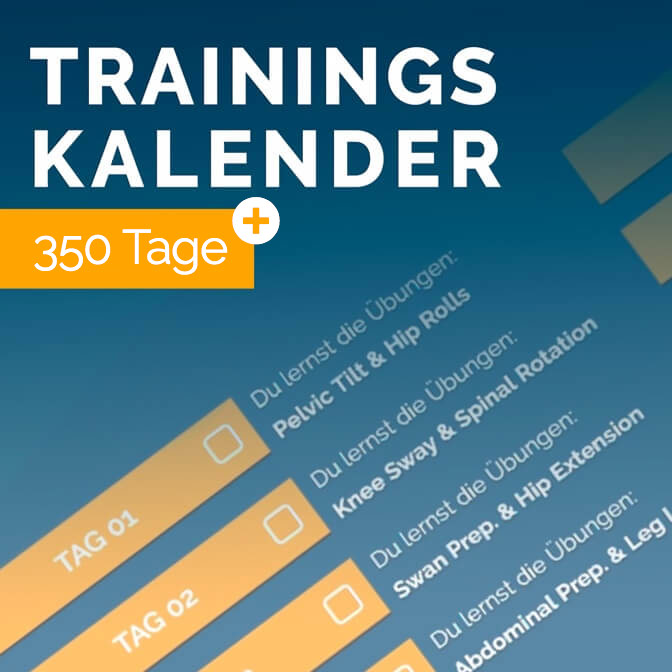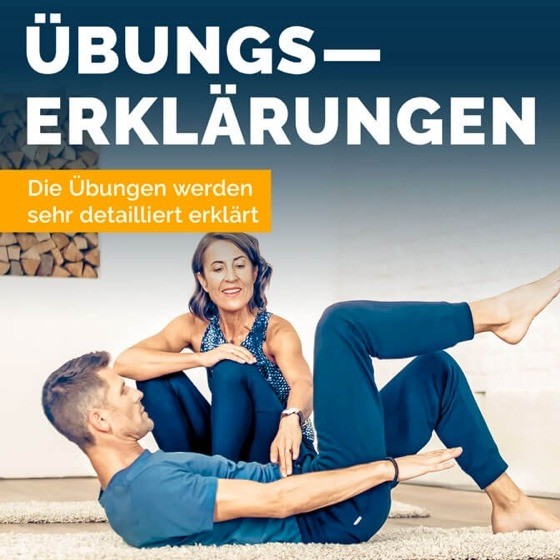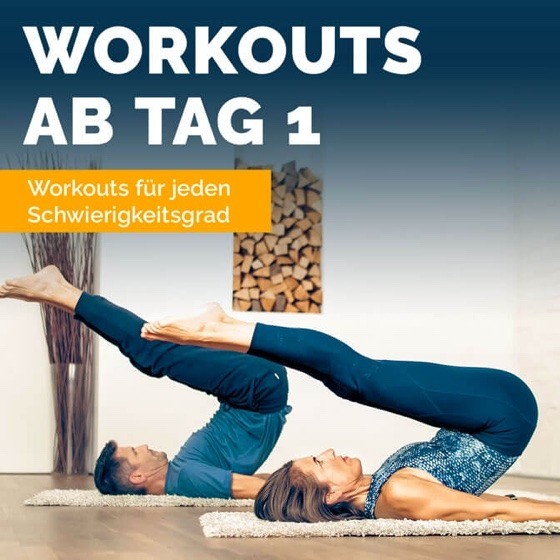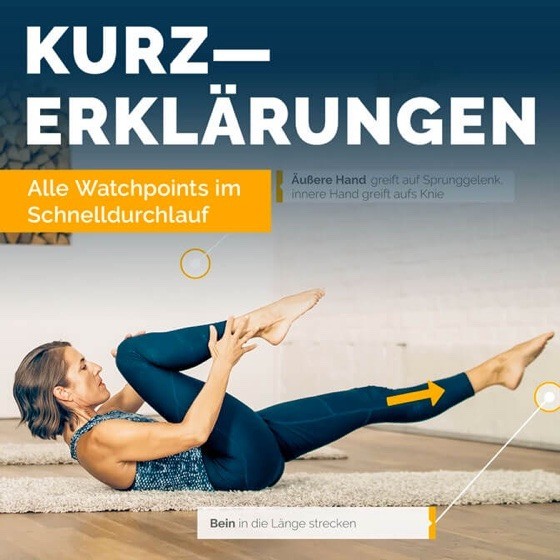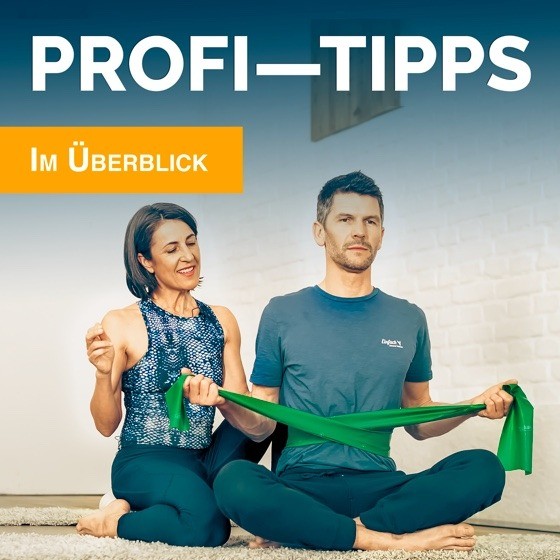
Pilates exercise of the month - Head Nods
The title of the article actually reads:
Dissolve neck pain, headaches [and much more!!!] for good with one of the simplest Pilates exercises
This was "a little" too long for the editors, so...
Solve neck pain with Pilates
04 May 2022, by Maria Felsner
Head Nods is a basic, seemingly small Pilates exercise. But the exercise has a great effect!
This wonderful, almost therapeutic exercise leads you into better awareness of all Pilates exercises that initiate flexion in the cervical spine, such as Abdominal Preparation, Hundred and Full Roll Up.
Important in the exercise:
Perform them correctly and, above all, consciously.
Targets
Goals are: protect the neck, prevent posture-related tension headaches, release restrictions in mobility, reduce stress and relieve tension. And this not only in the neck, but also in the jaw.
However, to achieve these goals, it needs the "attention to detail".
This begins with the correct alignment of the head and spine, continues with conscious breathing that guides the movement, and ends with noticing how the entire body responds to the micro-movement.
Now let's go through the three points step by step.
Let's start with the alignment
We can perform the Head Nods while standing, sitting or lying down.
As a beginner, it is recommended to do the exercise lying down, because the back of the head gets feedback through the pad.
The head rests so that the neck feels free and the gaze can be directed slightly forward toward the upright knees.
The spine lies neutrally on the floor. This means that there is a small air hole under the lumbar spine as well as under the cervical spine.
Your jaw remains relaxed by keeping the mouth slightly open and the lower jaw relaxed by feeling it sink towards the floor.
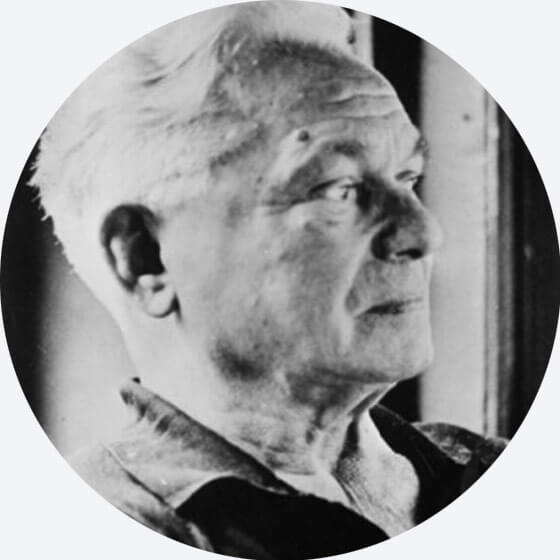
"The benefits of Pilates depend solely on how closely you follow the instructions when you practice!"
JOSEPH PILATES
Now let's put the attention on the breathing
We take a few deep breaths into the abdomen in this position.
Then we use the inhalation to increase the feeling of length in the spine by lowering the chin towards the chest. This creates a slight double chin.
The cervical spine feels longer. This creates more space in the neck directly under the base of the skull to the thoracic spine.
During the head nod, the jaw remains relaxed. The back of the head glides along the floor without lifting. Don't be surprised if this movement feels like a micro-movement.
On the exhalation, we return to the neutral position.
Be aware that the nodding movement can be guided by breathing.
The body perception
By paying attention to breathing, we subsequently train body awareness.
Once you can perceive the body in motion, the quality of the exercise increases.
You immediately feel if only your head is moving or if you also tend to bring your chest with you, if your jaw is relaxed or if you pinch it by nodding.
How to avoid mistakes
- Start by doing the exercise as small as possible.
- Keep your gaze slightly forward and never backward toward your forehead. This prevents overstretching of the cervical spine.
- Keep mobilizing your jaw to relieve possible tension in the temporomandibular joint.
- Imagine an ear axis. The head moves around the ear axis. Especially when you are sitting or standing. This way you avoid the head falling forward and the jaw getting stuck.
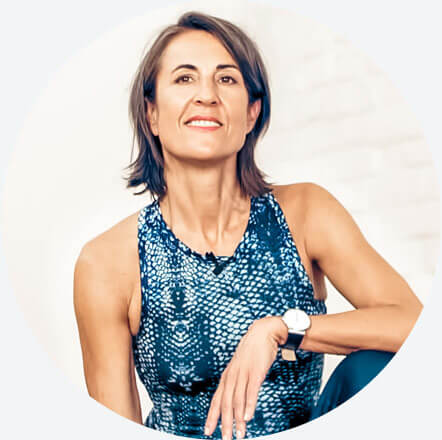
Pro Tip from Maria - The nose spiral
As soon as you notice pressure or tension building up in the neck area, it is recommended to do the "nose spiral".
Execution:
Get into a relaxed supine position. Imagine a brush on the tip of your nose. Start drawing a small circle on the ceiling with the brush.
Then slowly begin to perform a spiral movement, starting from the center of the circle. Carefully, the circles become larger and then smaller.
Breathing flows to it, the jaw remains relaxed.
You can also incorporate this exercise while sitting or standing over and over again. Make sure that the spiral does not become too large. We stay with the theme: small movement with big effect.
You will soon notice how the tension is released.
Exercise standing or sitting
If you want to do the exercise while standing or sitting, you can imagine an imaginary wall against which you turn your head over your ear axis during inhalation, without losing the distance to the wall.
If you have the opportunity to practice against a wall, place a flat pillow behind your head and stand in such a way that you can lean against it in a relaxed manner without the head having to stretch backwards.
Then perform the movement again as described.
What are the benefits of just this therapeutic Pilates exercise for everyday life?
Many people compress the cervical spine by tilting their head back. This can be stress-related or simply a habit.
In addition, more and more everyday tasks, such as checking the smartphone, involve moving the head forward and downward. This leads to chronic poor posture of the head and neck.
No matter where the cause of your neck discomfort lies, consciously incorporating Head Nods into your daily routine will help support your head while maintaining a neutral neck posture.
Try it best NOW off! You will not lose anything, you will gain more quality of life!
More articles on the topic
Detailed exercise explanation with video:
Pilates exercise Head Nods explained

